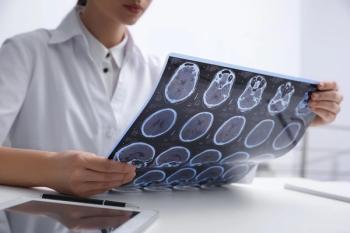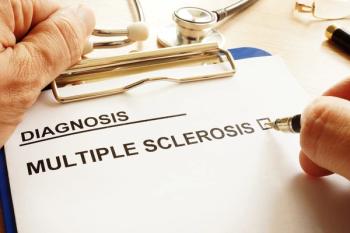
Exploring the Legal Use of Cannabis by Patients With Multiple Sclerosis
Background
Of the 100+ cannabinoids contained in the cannabis plant, delta-9-tetrahydocannabinol (THC) and cannabidiol (CBD) are perhaps the most well-known. The effects of cannabinoids are primarily mediated via the CB1 receptors, which are predominantly located in the central nervous system, and the CB2 receptors, which are mostly located in immune cells in the periphery. The agonist effects of THC on CB1 receptors produce psychoactive effects whereas the antagonist effects of CBD on CB1 and CB2 receptors result in inhibition of immune cells. CBD has anti-inflammatory and analgesic properties. Available cannabis products frequently contain THC only, CBD only, or similar quantities of THC and CBD.1
Per the authors, at the time of manuscript writing, 30 states and the District of Columbia had passed laws legalizing cannabis in some form, with 9 states allowing the recreational use of cannabis. The use of cannabis for medicinal purposes has increased after legalization. An increasing body of evidence has demonstrated that cannabis may improve some symptoms of multiple sclerosis (MS), including pain and muscle spasticity. While a growing number of patients with MS report using cannabis, previous studies have not evaluated the profiles of cannabis products being used.1
In this study, investigators sought to better understand1:
- The perceptions of cannabis use for the management of symptoms of MS,
- The extent and characteristics of cannabis use in patients with MS (including the cannabinoid profiles of products used and patterns of medicinal vs recreational use), and
- The effects of cannabis on symptoms of MS.
Methods
Cannabis is legal in Colorado, and this study enrolled patients who were receiving treatment at the Rocky Mountain Multiple Sclerosis Center at the University of Colorado. Potential participants were randomly identified during routine clinic visits and asked to participate in an anonymous computerized survey.1
Patients were classified as either current cannabis users or non-cannabis users. Participants were classified as current cannabis users if they would personally consider using cannabis to manage MS symptoms and had used cannabis during the previous 12 months; participants were classified as non-cannabis users if they would not consider using cannabis to manage MS symptoms OR would consider cannabis use but denied the use of cannabis during the previous 12 months.1
Results
A total of 251 patients completed the survey. Sixty-two percent of respondents were non-cannabis users and 38% were current cannabis users. There were no sociodemographic or clinical differences between non-cannabis users and current cannabis users. Patient-reported outcomes were generally similar with the exception of median disability, as cannabis users had significantly higher median disability scores compared with non-cannabis users (P ≤.05).1
Most patients (95%) felt that more research on the use of cannabis for MS symptom management was needed. Seventy-four percent of patients expressed that they would consider using cannabis to manage symptoms of MS. Pain, anxiety, and muscle spasms were the most common symptoms that patients felt cannabis could benefit. Patients’ preferred methods of using cannabis were combusting/smoking (30%), vaporizing (22%), and consumption (edibles) (22%). The majority of patients reported obtaining cannabis from a dispensary (79%), and 43% of users reported spending less than $25 a month for cannabis.1
Cannabis users were further classified by their product preference (CBD vs THC vs CBD/THC mix) and type of use (medicinal vs not strictly medicinal). Regarding the type of use, patients who used cannabis for strictly medical purposes reported a significantly higher mean disability and a lower mean physical health (P values not provided in the publication).1
For cannabis users, the symptoms of pain, insomnia/poor sleep, and spasticity/muscle tightness were most commonly cited as being positively impacted by cannabis use. Slowed thinking, weight gain, and decreased attention were the most bothersome and worrisome side effects reported by cannabis users. Of the 19 patients who used CBD-only products, the most common reasons for use were spasticity/muscle tightness (42%), pain (32%), insomnia/poor sleep (21%), and muscle spasm (21%). Of the 56 patients who used THC-only products or products with similar quantities of CBD and THC, the most common reasons for use were pain (52%), insomnia/poor sleep (32%), spasticity/muscle tightness (23%), and muscle spasm (20%).1
Reasons cited by non-cannabis users for not using cannabis included not having enough knowledge about cannabis (62%), negative side effects (20%), classification of cannabis as an illegal substance (18%), financial costs (18%), and moral/religious reasons (6%).1
Conclusion
The use of cannabis by patients with MS is increasing, especially in states where it is legal. As the number of states legalizing cannabis continues to expand, an increasing number of patients with MS will be pursuing therapeutic cannabis for symptom relief. The results of this study suggest that cannabis is an effective treatment for many MS symptoms and is associated with minimal side effects. Additional research is needed to better understand the therapeutic and side effect profiles of particular cannabinoids (ie, THC-only, CBD-only, and THC/CBD mix) and the impact of various routes of ingestion (eg, smoking vs consumption).1
Reference
1. Weinkle L, Domen CH, Shelton I, Sillau S, Nair K, Alvarez E. Exploring cannabis use by patients with multiple sclerosis in a state where cannabis is legal. Mult Scler Relat Disord. 2019;27:383-390. doi: 10.1016/j.msard.2018.11.022.
Newsletter
Stay ahead of policy, cost, and value—subscribe to AJMC for expert insights at the intersection of clinical care and health economics.









































